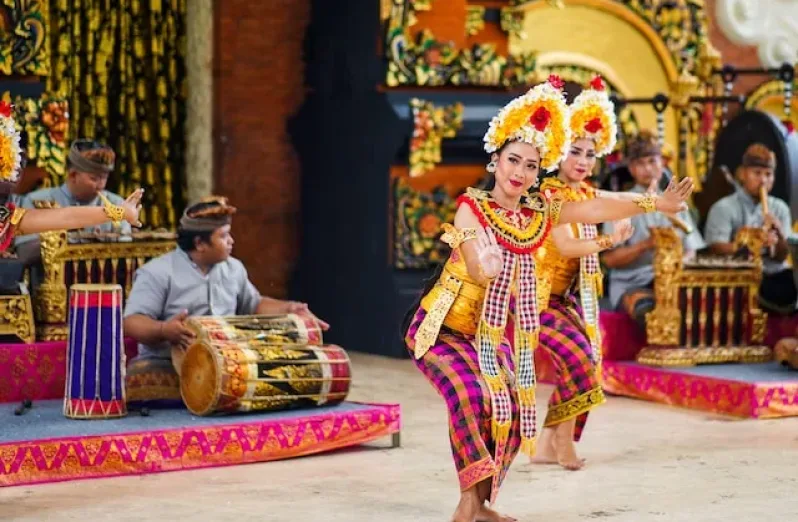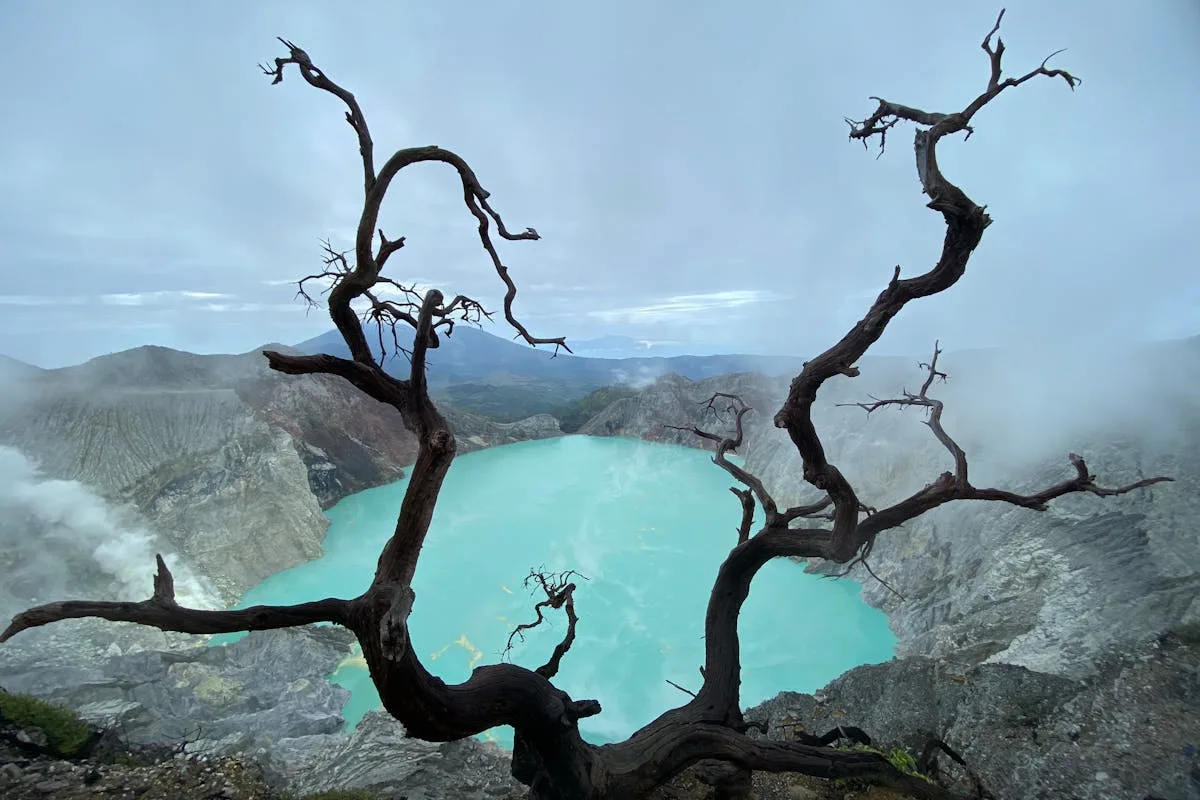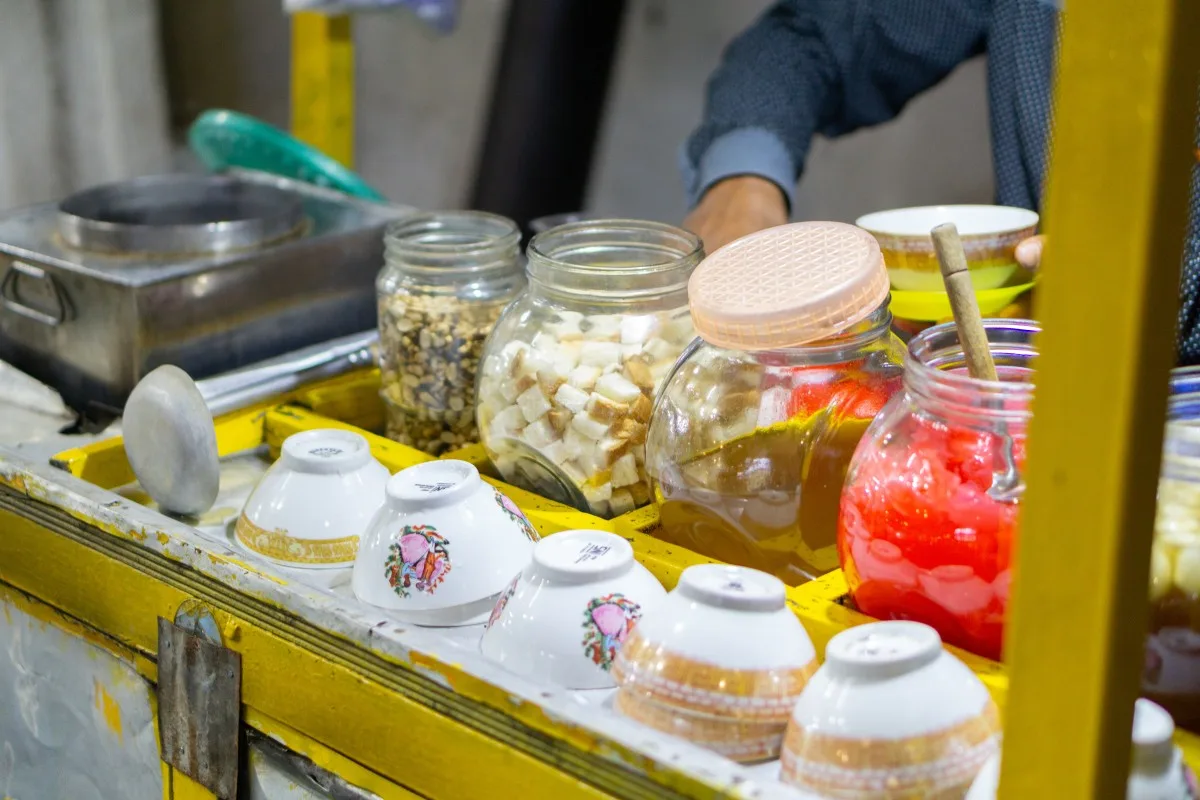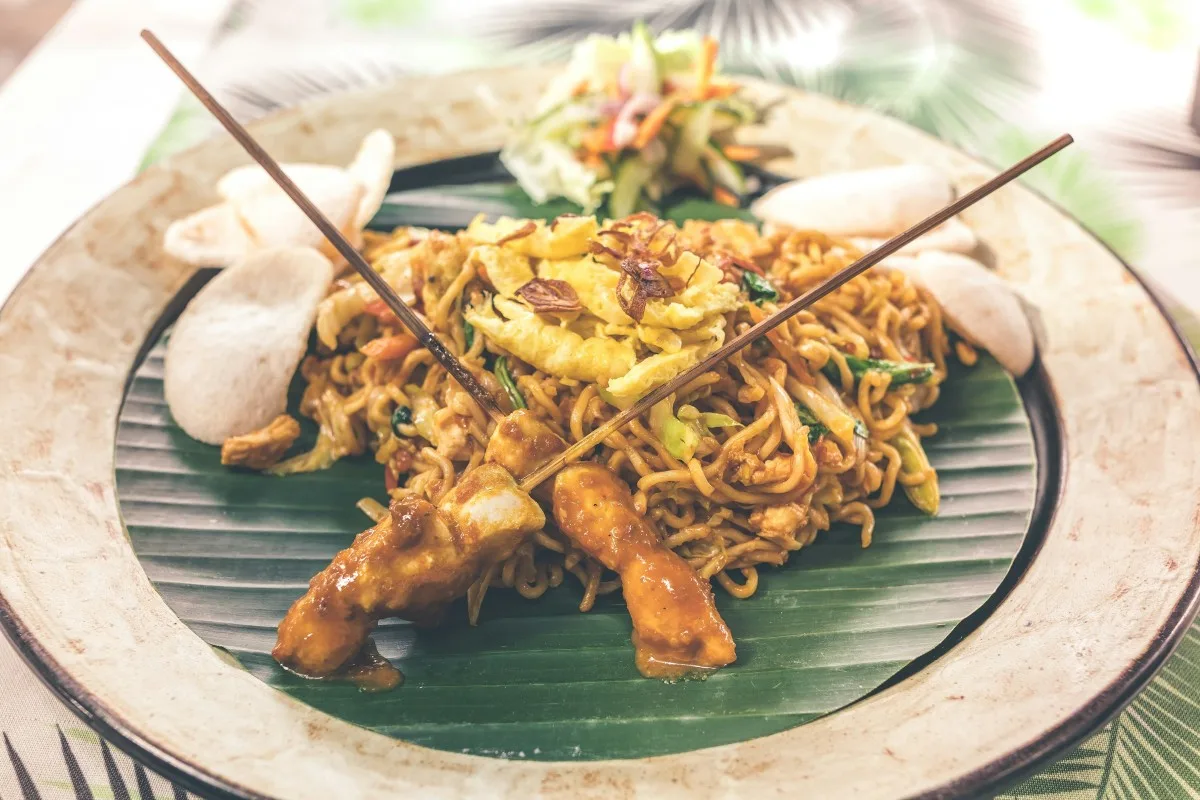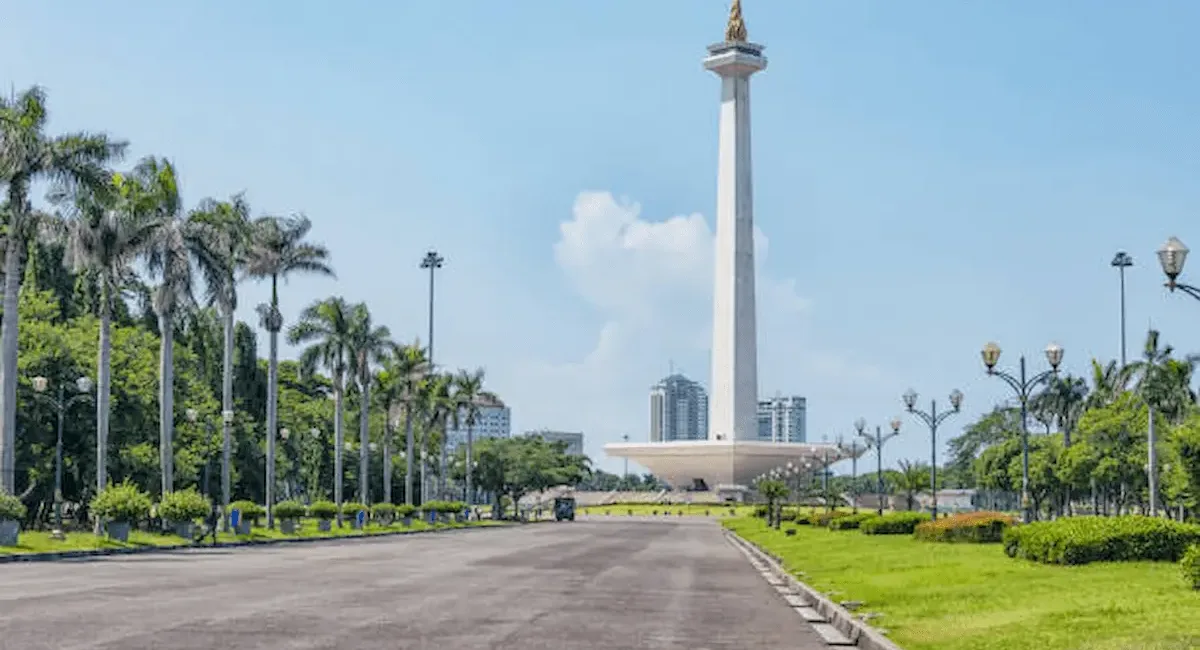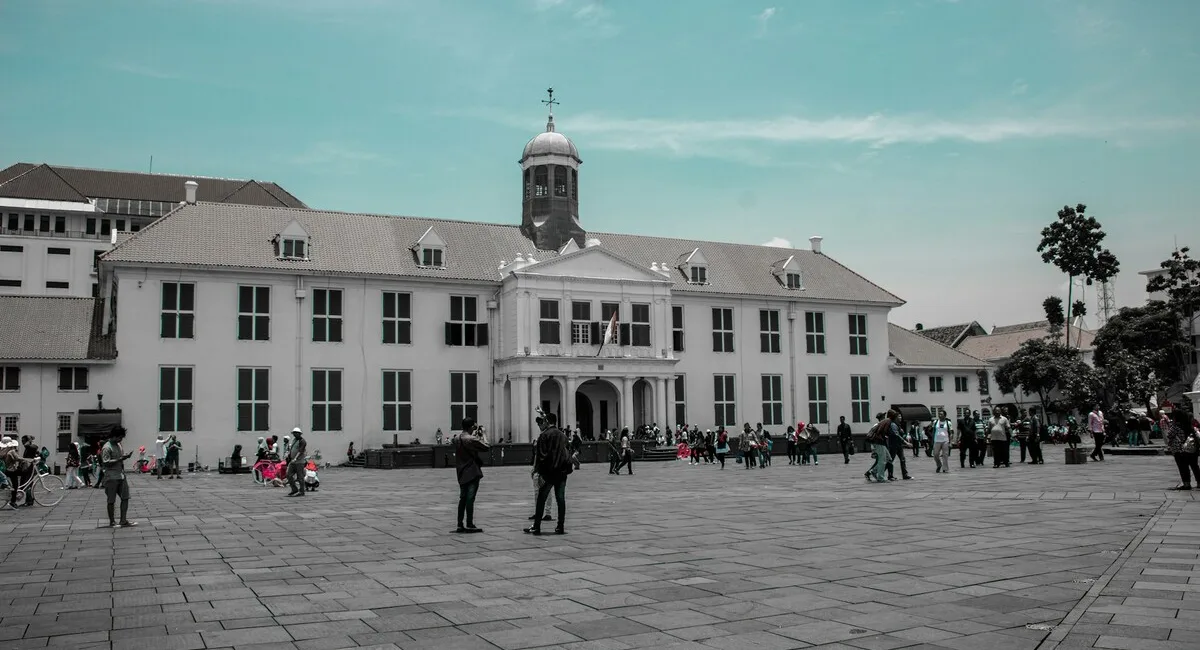Traditional Balinese dance and ceremonies are a beautiful way to experience the island’s culture. They showcase the artistry and spirituality that are deeply rooted in Balinese traditions.
For example, the Barong Dance tells vivid stories, while Legong’s graceful movements and the rhythmic intensity of the Kecak Dance are impressive to watch.
Additionally, Galungan, Nyepi, and Melasti ceremonies offer an insight into Bali’s spiritual practices and commitment to preserving its culture.
These enchanting performances and sacred ceremonies are a celebration of Bali’s cultural identity and spiritual strength. Wanna know more? Let’s read this insightful article to get you started!
3 Traditional Dances in Bali
Traditional Balinese dance and ceremonies showcase Indonesia’s rich history and spiritual heritage on the island of Bali. These captivating dances are known for their intricate storytelling, vibrant celebrations, and cultural expression.
1. Barong Dance: The Battle of Good and Evil
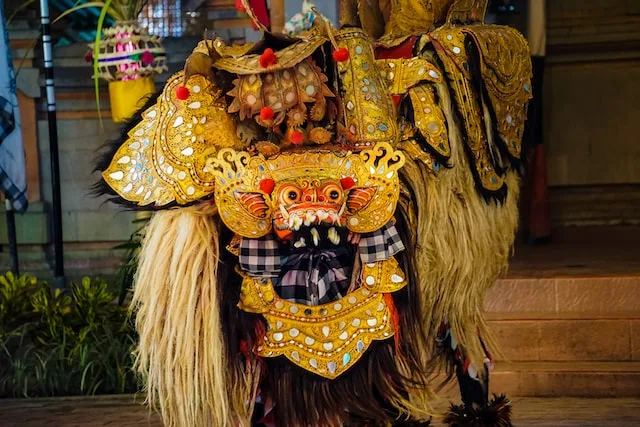
Photo: Peter George via Unsplash
The Barong Dance is a famous dance that tells a story about a battle between the Barong and Rangda. The main character is Barong, who is known as the king of the good spirits. He fights against Rangda, the evil demon queen.
People perform this dance on the streets, and during the performance, a priest sprinkles holy water on the Barong as a blessing.
Accompanied by a gamelan orchestra, it is a beautiful and exciting dance that you should definitely see if you ever visit Bali!
Read Also: 8 Best Bali Springs for Wellness Seekers
2. Legong Dance: Grace in Motion
In the realm of traditional Balinese dance and ceremonies, the Legong Dance stands out for its graceful and intricate movements.
It is performed by teenage girls in elaborate costumes and tells stories from Hindu mythology, with the dancers using precise gestures and expressions to convey the story. The gamelan accompanies the dancers, creating a mesmerizing performance.
3. Kecak Dance: The Fire Dance Drama
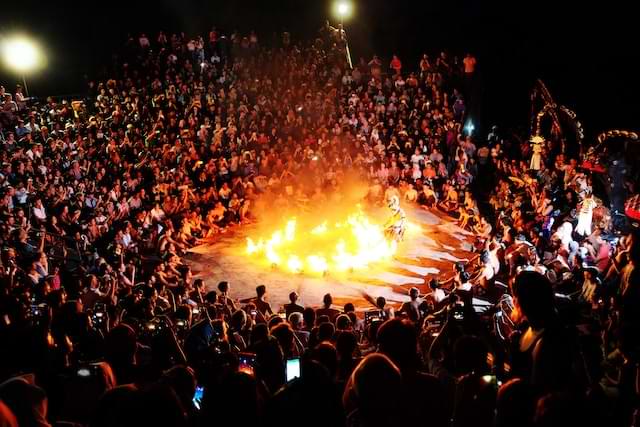
Photo: Den via Unsplash
The Kecak Dance tells a shorter version of the epic Ramayana Saga, with 50–60 male dancers playing the roles of Rama, Shinta, Lakshmana, Rahwana, Hanoman, Sugriwa, and other characters.
This performance is a unique dance drama held outdoors at sunset, usually on a cliff facing the sea. The entire drama relies only on natural light, starting at dusk and continuing into the dark with twinkling bamboo lanterns.
There is no artificial backdrop or traditional music. The drama is simply accompanied by the chanting of the chorus of men—representing an army of monkeys—continuously reciting “Cak! Cak! Cak!” throughout the performance. The human-voiced orchestra provides a dramatic and wonderful soundtrack that makes this dance memorable.
3 Traditional Ceremonies in Bali
Beyond the captivating dances, Bali is also home to traditional ceremonies, each deeply rooted in the island’s spiritual beliefs. These ceremonies offer a glimpse into the profound cultural heritage that defines Bali.
1. Galungan: Celebrating Good Over Evil
Galungan is a Hindu festival that represents the victory of good over evil. On this special day, Balinese people present lavish offerings and colorful decorations. A bamboo pole called penjor is beautifully decorated with young coconut leaves, flowers, and fruits.
Families gather to celebrate Galungan with prayers, feasts, and traditional dances. Through these festivities, locals come together to create a sense of unity and spiritual harmony across the island.
Read Also: Breakfast with Orangutans in Bali: A Once-in-a-Lifetime Experience
2. Nyepi: Bali’s Day of Silence
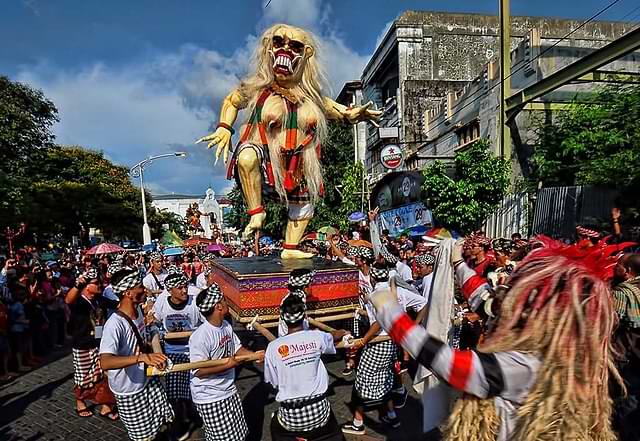
Photo: Simondodit via Wikimedia Commons
Nyepi is a unique ceremony that is marked by a complete pause in regular activities, such as travel, work, and entertainment. Therefore, airports, schools, markets, and other public places are closed during this significant event.
The day before Nyepi, there is a parade called Ogoh-Ogoh, where you can see scary sculptures that symbolize evil spirits. The following day is dedicated to meditation and communal introspection.
3. Melasti: Purifying the Soul by the Sea
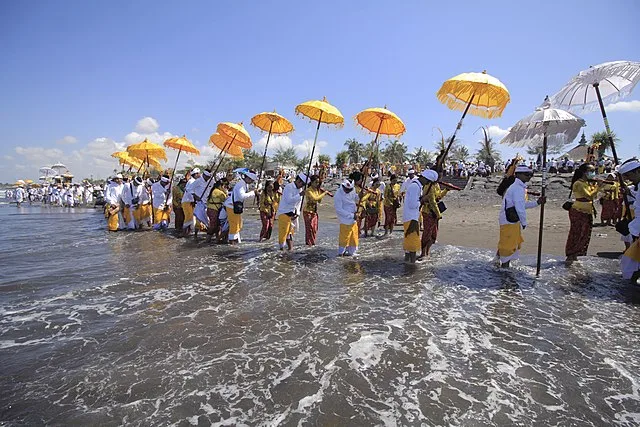
Photo: Putu wijanatha via Wikimedia Commons
Before Nyepi, Balinese Hindus flock to the nearby beaches and sacred water sources to cleanse themselves from evil spirits. This traditional ceremony includes processions, prayers, and the symbolic cleansing of sacred artifacts.
Not only does this cultural and spiritual practice depict Bali’s strong connection to the sea, Melasti is also a moment to purify the soul and prepare it for a brand new start.
Secure Your Serene Stay at Bobocabin Bali
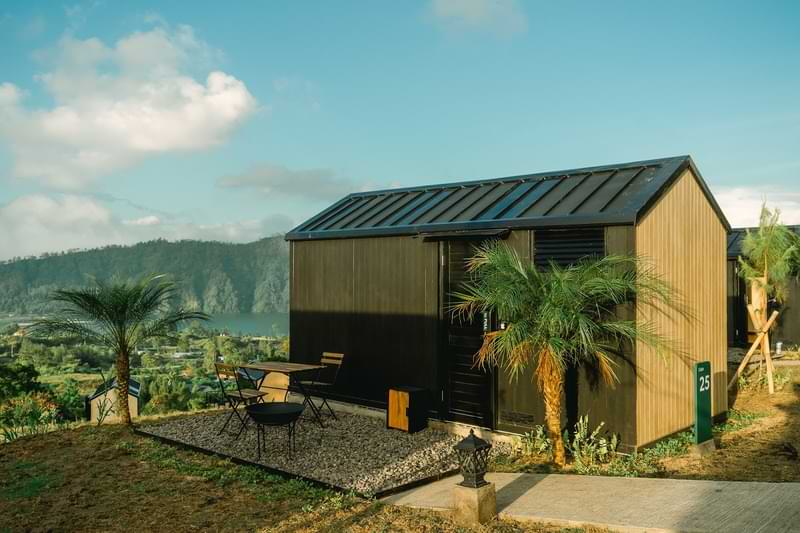
After witnessing the vibrant traditional Balinese dance and ceremonies, you certainly need a place that allows you to rest comfortably. Worry not, because Bobocabin get you covered!
With spacious and well-appointed cabins specially designed to ensure everyone’s comfort, Bobocabin Ubud and Bobocabin Kintamani will make your Bali journey even more memorable.
With our easy-to-use app, booking your stay is a breeze. Book now, pack your stuff, and get ready to witness the richness of Bali’s culture!
Header image by: Mathis Jrdl via Unsplash

